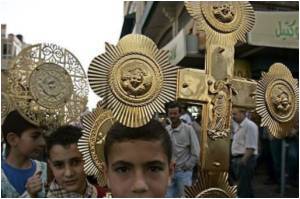Leonardo Da Vinci's masterpiece Last Supper faces the risk of damage from air pollution due to its location in one of Western Europe's most polluted cities.

To test the effectiveness of their pollution countermeasures, Italian officials called on Constantinos Sioutas, Fred Champion professor of civil and environmental engineering at the USC Viterbi School of Engineering. For his ongoing research, Sioutas has designed unobtrusive air samplers that are compact and quiet.
"These air pollution sampling technologies are ideally suited for use in sensitive facilities such as art galleries and museums. They do not disrupt the day-to-day operations of the facility," Sioutas said.
A multi-national team that includes USC scientists used the monitors to determine that indoor pollution has been drastically reduced at the church, though visitors enjoying the painting remain a potential source of soiling. The team's findings will be presented in December in Milan.
The team deployed two sets of air quality monitors for one year at the church, and found that – for the most part – the Italian authority responsible for the facility housing the famous painting (Soprintendenza per i Beni Architettonici e per il Paesaggio di Milano) is winning the war with outdoor air pollution. Fine and coarse particulate matter concentrations were reduced around the painting by 88 and 94 percent, respectively from their corresponding outdoor levels.
"It's a spectacular reduction," Sioutas said. "It is, frankly, very impressive."
Advertisement
Only a handful of patrons are allowed into the church via an airlock-style chamber at any given time, and are only allowed to stay for 15 minutes at a stretch.
Advertisement
"Even the painting itself is emitting," she said. Tiny particles of wax used in early repair efforts on the painting also can get into the air, soiling the painting in the same manner.
In addition to aiding in the conservation of the Last Supper, the team's research can be used as a benchmark for future studies aimed at protecting indoor artworks and antiquities.
Source-Eurekalert









